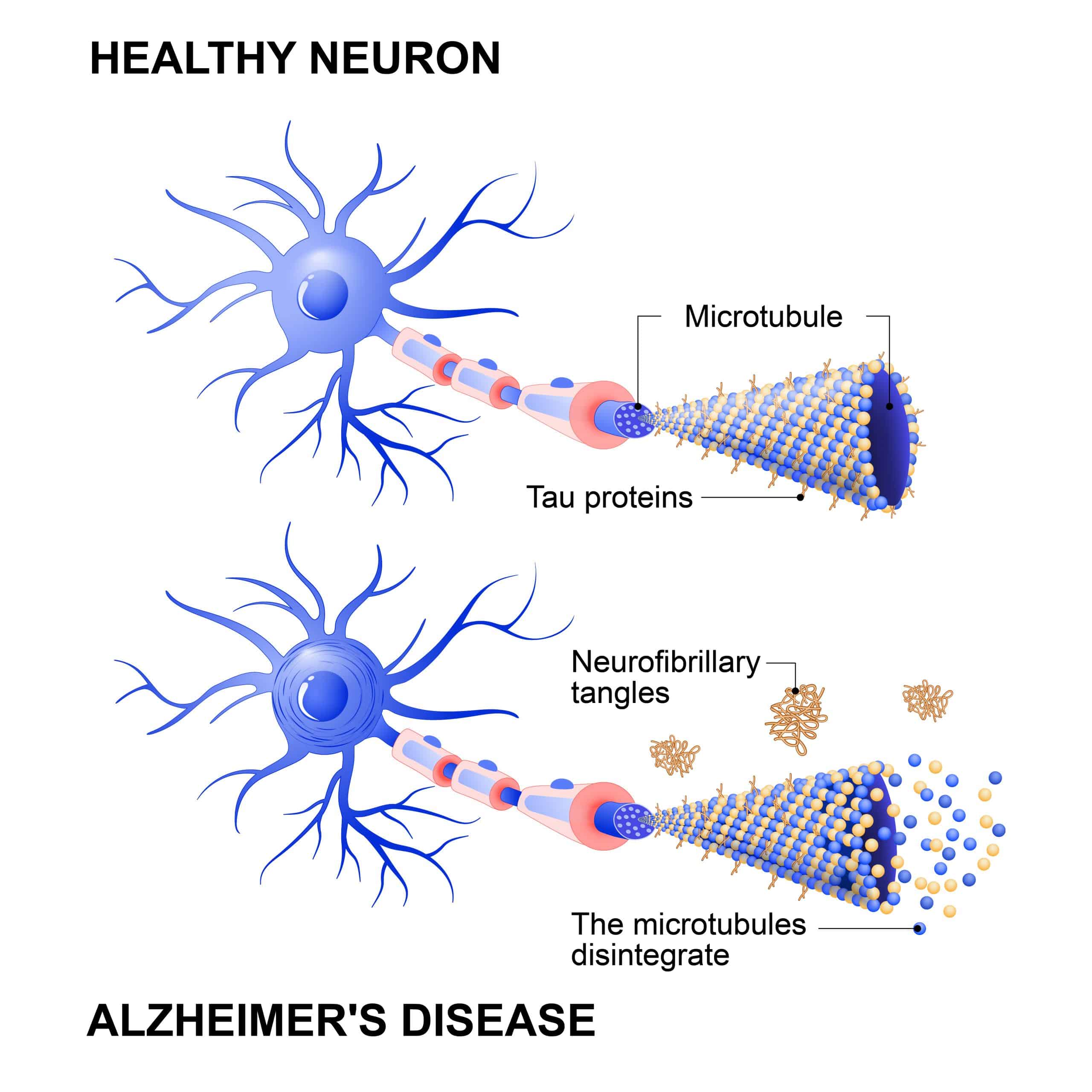
Introduced in 2014, primary age-related tauopathy, or PART, is a newer pathological designation that describes a pathology that is often observed in the brains of aged individuals. Numerous autopsy studies have demonstrated neurofibrillary tangles in the brains of aged individuals indistinguishable from tangles present in Alzheimer’s disease, in the absence of (or with minimal deposition of) beta-amyloid plaques.
Tauopathic changes in the brain are not unique to Alzheimer’s disease or primary age-related tauopathy. Consequently, relying on pathology may not be sufficient in reliably providing accurate diagnoses or providing accurate insight into the progression of neurological diseases, like Alzheimer’s disease.
Let’s take a closer look into primary age-related tauopathy, Alzheimer’s disease pathology, tau pathology in other neurological diseases, and how to place neurological disease patients precisely on a disease continuum.
Most adult human brains have at least focal neuropathic changes. Neurofibrillary tangles in the brains of aged individuals are, for the most part, restricted to structures in the medial temporal lobe, basal forebrain, brain stem, and olfactory regions of the brain, meaning it does not typically progress extensively to neocortical regions.
Because of this restricted pathoanatomical pattern, the majority of individuals with primary age-related tauopathy do not progress to dementia. However, mild cognitive impairment is possible. Symptoms of primary age-related tauopathy typically range from normal to amnestic cognitive changes. A very small percentage of individuals with primary age-related tauopathy exhibit profound cognitive impairment.
This variation in degrees of cognitive changes is hypothesized to be related to comorbid pathologies—research suggests that comorbid pathologies may contribute to cognitive impairment in patients with primary age-related tauopathy.
Neuropathology plays a crucial role in characterizing the pathogenesis of neurological diseases, such as Alzheimer’s disease. Neuropathological hallmarks of Alzheimer’s disease consist of positive and negative lesions. Positive lesions include tau hyperphosphorylation, neurofibrillary tangles, beta-amyloid plaques, cerebral amyloid angiopathy, and glial responses, while negative lesions include neuronal and synaptic loss. However, Alzheimer’s disease is most commonly characterized by beta-amyloid plaques and neurofibrillary tangles resulting from abnormal tau hyperphosphorylation.
The presence of tau pathology is not unique to aged individuals nor is it unique to Alzheimer’s disease. Tau pathology is present across a breadth of neurological diseases and disorders, including Parkinson’s disease, frontotemporal dementia, Huntington’s disease, progressive supranuclear palsy, and chronic traumatic encephalopathy, among others.
Because of the overlapping pathologies between primary age-related tauopathy, Alzheimer’s disease, and other neurological disorders, relying on pathology-based diagnostic tools, such as positron emission scans and cerebrospinal fluid analysis, may not be sufficient to distinguish between diseases and conditions with common pathologies and accurately diagnose specific neurological diseases.
Moreover, protein levels and other neuropathological characteristics are not necessarily indicative of where a patient lies precisely on a disease continuum, particularly as pathologies can affect each patient uniquely. In other words, protein levels do not necessarily correlate to how the patient is doing or how the patient is functioning. While protein levels and degrees of atrophy may correlate with neurocognitive decline to some degree, it is not a 1:1 relationship.
Understanding at a highly granular level how an individual’s Activities of Daily Living (ADLs) are changing is arguably the most compelling method for identifying, measuring, and monitoring neurocognitive changes in patients, and, consequently, diagnosing neurological diseases early and accurately. Quantitative, robust measurement of patients’ abilities to complete complex ADLs more accurately correlates with their neurocognitive function, allowing providers to know with higher certainty what phase of a neurological disease a patient is in.
The ability to place patients precisely on a disease continuum not only enables improved diagnostic accuracy but also can help providers identify proper therapeutic windows, analyze how disease pathology may be affecting patients uniquely, and provide insight into how patients may progress.
Altoida’s mission is to accelerate and improve drug development, neurological disease research, and patient care. To learn more about our precision-neurology platform and app-based medical device, contact us!